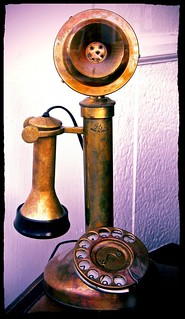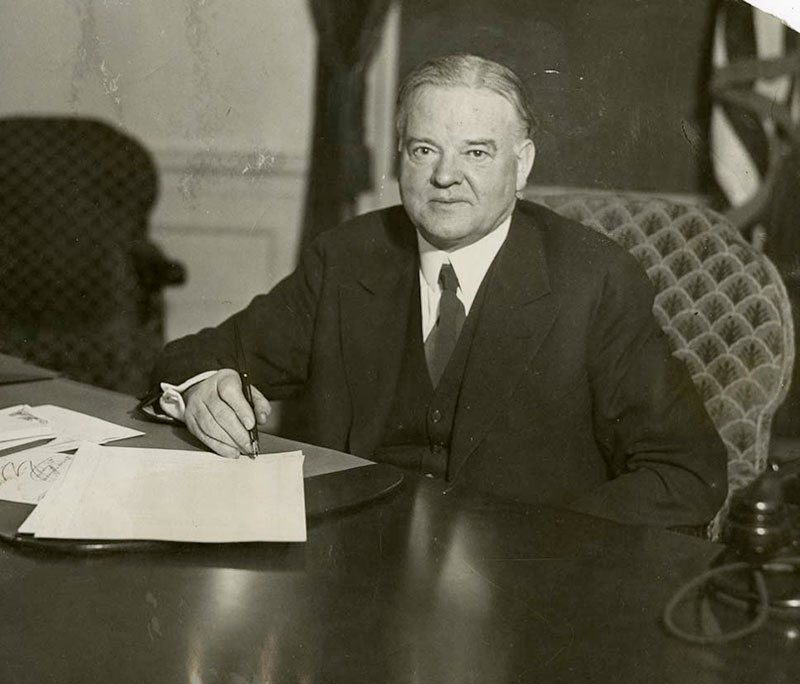 |
Cybertelecom Federal Internet Law & Policy An Educational Project |
AT&T 1922 - 1948 :: Era of Consolidation

|
AT&T 1922 - 1948 :: Era of Consolidation |
 |
|
|

Source: Robert Cannon
taken in Brunswick, MDAT&T historically argued that telephone service was a natural monopoly and that competition was inefficient. As the competitive era of telephone service came to a close, AT&T was successful in its argument and was able to establish itself as a government sanctioned monopoly.
AT&T's status as a government sanctioned monopoly would eventually erode at the borders of the market where competition could be introduced. Carterphone and Hushaphone introduced competition in the Customer Premises Equipment market. The Computer Inquiries introducted competition in the enhanced services market. MCI introduced competition in the long distance market. The break-up of Ma Bell sought to but failed to introduce competition in the local network market. Mobile phone service introduced competition in the wireless telephone service market (although that competition appears to be eroding with soon to be only three providers left).
The passage of the Willis Graham Act 1921 marked the closure of the era of telephone competition, as independant telephone companies with financial difficulties sought to be acquired by AT&T. In time, telecommunications policy operated with the belief that the telephone network was a natural monopoly. Telecommunications policy determined that the proper way to regulate the telephone monopoly and determine appropriate rates was through rate-of-return regulation. The Willis Graham Act exempted telephone companies from antitrust laws, permitting consolidation of companies on approval of the ICC.
Willis-Graham Act, 61 Cong. Rec. 1988 (1921)
"There are monopolies which ought to exist in the interest of economy and good service in the public welfare, monopolies which must be promoted instead of being forbidden. The telephone business is one of these. Legitimate consolidation will promote economy. It will promote service. It is foolish to talk about competition in the transmission of intelligence by telephone. It is silly to believe that there can be real competition either in service or in charges… The thing that the American Congress ought to do is to.. regulate those monopolies so as to get reasonable prices and good service for the people… "
Willis Graham Act superceded the Kingsbury Accord.
Prof. Milton Mueller rejects both the argument of natural monopoly and of the AT&T monopoly occurring as a result of predatory actions. Instead, Mueller argues that AT&T's monopoly was established pursuant to Vail's concept of "universal service," that the only way to overcome fragmented non interconnecting competing telephone services was to eliminate the competition and establish one company as the one universal, fully interconnected, network. Milton Mueller, "Universal service" and the new Telecommunications Act: Mythology Made Law 1997 ("This law exempted telephone companies from the antitrust laws in order to make it possible for them to "unify the service" by merging competing telephone exchanges. In so doing, it provided the legal foundation for the first generation universal service policy.")
AT&T finally realized its dream of becoming the official blessed monopoly by the 1930s. [Mueller 1997] [Fraser] (See AT&T for more on the history of AT&T that led it to becoming a government sanctioned monopoly) It has been argued that a different motive of AT&T for becoming a government sanctioned monopoly was to avoid Progressive Era pressures to nationalize the telecommunications network.
AT&T: Electrical Transmission of Speech (1920s) |
|
AT&T: That Little Big Fellow (1927) |
1922
- August 2: Alexander Graham Bell dies [IEEEVM] [About.com] [Brooks p 57] [LOC Bell Family Papers]
- 13 m telephones in operation [Coon 29]
1924
- AT&T demonstrates the telephotography services, aka fax, and begins service in 1925. [1930 telephotography shot of Babe Ruth]
- Western Electric Hawthorne Plant goes online [Harvard]
1925
- In 1925 Walter Gifford, newly elevated to the presidency of AT&T, decided that AT&T and the Bell System should concentrate on its stated goal of universal telephone service in the United States." [AT&T: History: Early Intl] [See Mueller]
- "For much of its history, AT&T and its Bell System functioned as a legally sanctioned, regulated monopoly. The fundamental principle, formulated by AT&T president Theodore Vail in 1907, was that the telephone by the nature of its technology would operate most efficiently as a monopoly providing universal service. Vail wrote in that year's AT&T Annual Report that government regulation, "provided it is independent, intelligent, considerate, thorough and just," was an appropriate and acceptable substitute for the competitive marketplace." [AT&T : History: The Bell System]
- Western Electric's research and development work is restructed as Bell Labs, which is owned jointly by Western Electric and AT&T. [Porticus Western Union] [Iardella 18, 32] [Bell Labs History] ITT acquires Western Electric international operations.
- Bell Labs transmits first facsimilie [Bell Labs History]
1926
- Bell Labs and Western Electric made the equipment for sound motion pictures. [Iardella 32]
- Southern Bell and Telephone acquires Cumberland Telephone and Telegraph Company. [Antoinette Hall]
1927
- Bell Labs demonstrates TV by wire with a conversation between Secretary of State Herbert Hoover and AT&T President Walter Gifford. [Iardella 32]
- "In 1927, AT&T inaugurated commercial transatlantic telephone service to London using two-way radio. Initially, these calls cost seventy-five dollars (U.S.) each (for three minutes)." The capacity was one call at a time. [AT&T: History: Early Intl] [The New AT&T 2005]
 Pres. Herbert Hoover with First Telephone in Oval Office. |
|
AT&T: Telephone Courtesy (1940s) |
|
War and the Telephone 1943 |
|
Late 1940s Bell Mobile Telephone |
© Cybertelecom ::1929
- AT&T files patent for coaxial cable. [The New AT&T 2005]
- "In 1929, AT&T network engineers implemented the first national General Toll Switching Plan. It established a hierarchical, national network with eight interconnected regional centers across the country. More than 140 primary centers, at least one in each state, connected to the regional centers. More than 2,000 toll offices throughout the country provided connections between the primary centers and every local exchange in the country. Additional circuits provided direct connections between centers with substantial direct traffic. These additional circuits also provided alternate back-up routes. Operators no longer had to rely on massive route books to determine call paths. Now operators sent calls up (and then back down) an established hierarchical chain. A single, nationwide structure provided a solid basis for future planning and expansion as traffic grew. With some modifications, notably the addition of sectional centers in the 1950s, AT&T continued to rely on this hierarchical network until the 1980s." [AT&T: History of Network Switching]
- Western Electric's sales $411 m. [Porticus Western Union]
- March 29 :: Pres. Herbert Hoover has telephone installed in Oval Office.[Herbert Hoover Library] [History.com]
1930
- Cincinnati Bell initiates migration to dial service. Migration is completed after WWII. [Cincinnati Bell History]
- Western Electric 43,000 employees [Porticus Western Union]
- AT&T acquires the Teletype Corporation [History of the Teletype Corporation]
- "Radio-telephone service to Hawaii began in 1931, and to Tokyo in 1934" [AT&T: History: Early Intl]
1933
Western Electric's sales $70 m; 6000 employees. [Porticus Western Union]1934: Communications Act of 1934
- AT&T has 13,793,000 telephones in operation. [1934 Com. Study at 1]
- June 19: FDR signs the Communications Act of 1934
- Thomas Watson dies. [Brooks p 57] [Braintree]
- The Communications Act of 1934 and The FCC
- "The system made steady progress towards its goal of universal service, which came in the twenties and thirties to mean everyone should have a telephone." [AT&T : History: The Bell System]
1935
First round the world telephone call. [Iardella 34]1936
First coaxial cable put into service between New York and Philadelphia. [Iardella 34] [AT&T: History of Network Transmission] "The first coaxial cable experiment opened between New York and Philadelphia in 1936. One pair of coaxial units simultaneously carried 1,860 telephone conversations or 600 conversations and two TV programs. Each of these 1,860 voice pathways were equipped to provide up to 18 telegraph circuits. Commercial service was inaugurated between Stevens Point, Wisconsin, and Minneapolis, Minnesota, in 1941. Coast-to-coast service was inaugurated in 1951 when the Japanese Peace Conference in San Francisco, California, was televised."
1937: Clinton Davisson of Bell Labs receives a Nobel Price. [Iardella 19]
1939: Telephone is deployed as "a weapon of preparedness." [Porticus Western Union] Western Electric manufactures Signal Corps sets in preparation for the war. [Iardella 34]
World War II: Western Electric builds US military's radar system [Brooks p 11] [Iardella 35] Between 1942 to 1945, West Electric sales to USG more than $2.3B. [Iardella 35]
During World War II, AT&T ran ads asking consumers to not make long distance phone calls in order to keep the load on the network - which could not be expanded during the war - down. [AT&T Ad Encouraging Consumers to Limit Long Distance Calls]
1940
Western Electric sales to USG $3.5m. [Iardella 34]1941
- Western Electric sales to USG $41m. [Iardella 34]
- "The first “regular” installation connected Minneapolis, Minn., and Stevens Point, Wis., in 1941. This L1 coaxial-cable system could carry 480 telephone conversations or one television program. " [AT&T: History of Network Transmission]
1943
The first African American, Gloria Shepperson, is hired in the Bell System helped by Fair Employment Practices Executive Order 8802 (1941) banning hiring discrimination. [CWA History]
1945
AT&T leases 600,000 new phones in the first few months of peace. By years end, 27,946,000 phones in US; 22,446,000 are Bell telephones. [Iardella 36]1946
- AT&T introduces first mobile telephone service in St Louis. [Porticus Western Union] [AT&T: History: Milestones] [Picture of a mobile phone user in Chicago in 1947]
- AT&T puts into service its first multichannel ultahigh frequency microwave service in California. Another microwave system would be installed in weeks in Nantucket. [Iardella 36]
1947: Bell Labs
- develops the transistor. [Porticus Western Union] [CW] [Bell Labs History] [The New AT&T 2005]
- Proposes the cellular network [Bell Labs History]
1948
- AT&T puts into service the No. 5 Crossbar. [Iardella 36]
- AT&T opened its first microwave relay system between Boston and New York. [AT&T : History: The Bell System] [Picture of Microwave Relay Tower 1947]
1949 :: Antitrust II